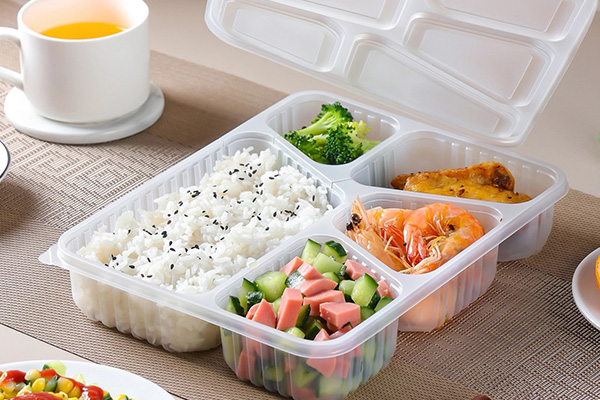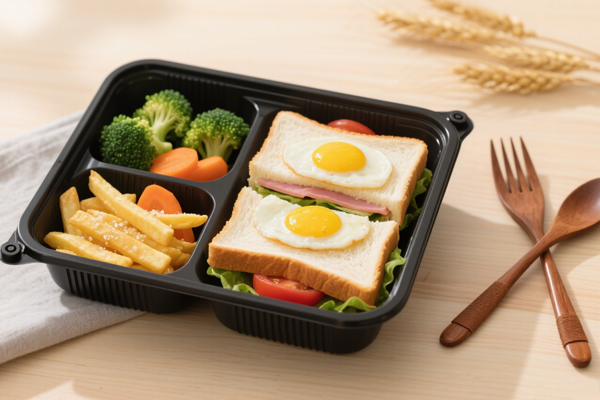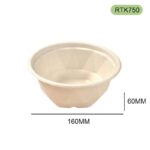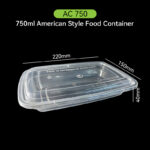Introduction: Takeaway Packaging at a Turning Point
In 2025, the global foodservice industry is under intense pressure to balance convenience, sustainability, and compliance. With single-use plastics facing bans, extended producer responsibility (EPR) laws expanding, and consumer expectations shifting toward eco-friendly choices, packaging is no longer just a carrier—it’s a statement. Among the many solutions, the Compartment Food Container has emerged as one of the most versatile and future-proof options for restaurants, caterers, and retailers.
This article explores why Compartment Food Containers are becoming indispensable in the modern takeaway ecosystem. From sustainability and safety to market adaptability, they deliver value at every stage of the supply chain.

The Rise of the Compartment Food Container
The Compartment Food Container is not a new invention, but its role has changed dramatically in the past five years. Originally designed to separate side dishes and main courses, it now carries greater weight in terms of sustainability and compliance.
-
Multi-compartment efficiency: Keeps meals neatly divided, preventing flavor mixing.
-
Consumer appeal: Offers visually attractive meal presentation, important for delivery and retail-ready meals.
-
Logistics-ready: Stackable, leak-resistant, and freezer/microwave-safe, making them suitable for cold chain and hot food services.
👉 Discover our latest designs of Compartment Food Containers, trusted by restaurants and supermarkets worldwide.
Regulatory Pressure: Why Styrofoam Is Out, and Recyclable Containers Are In
One of the biggest forces driving adoption is regulation. For example, the state of Virginia (USA) has announced a ban on Styrofoam takeout boxes starting in 2025, with penalties for violators. This signals a global trend: non-recyclable and non-compostable packaging is being phased out.
Key regulatory shifts:
-
EU PPWR (Packaging & Packaging Waste Regulation) requires recyclable packaging by 2030.
-
North America: Multiple states are banning expanded polystyrene (EPS) foam.
-
Asia-Pacific: Countries like China and India are restricting single-use plastics.
In this context, Compartment Food Containers made of PP, PLA, or cornstarch provide a clear pathway to compliance without sacrificing convenience.
Sustainability: Meeting Eco-Friendly Demands
Today’s consumers are vocal about eco-conscious choices. A survey by Deloitte in 2024 showed that 61% of consumers actively seek sustainable packaging when choosing foodservice brands.
How Compartment Food Containers meet these demands:
-
PP recyclable containers: Durable and recyclable under common municipal programs.
-
PLA biodegradable options: Compostable under industrial conditions.
-
Cornstarch-based trays: Renewable material that bridges the gap between plastic and compostable fiber.
The variety of materials available means brands can align packaging with their sustainability goals and local waste management systems.
Food Safety and Hygiene Benefits
In an era where foodborne illnesses can instantly harm brand reputation, Compartment Food Containers offer a higher standard of hygiene.
-
Sealed freshness: Leak-resistant lids keep sauces and oils contained.
-
Microwave & freezer-ready: Containers withstand –20 °C to 120 °C, ensuring safety in multiple cooking and storage environments.
-
Certified compliance: FDA, SGS, and LFGB certifications guarantee safe food contact.
This dual role—protecting the environment while protecting the consumer—sets them apart from outdated alternatives.

Case Studies: How Brands Are Benefiting
🌎 Case 1: Global Fast-Casual Chain
A major international fast-casual brand switched from EPS trays to PP Compartment Food Containers in 2023. Results:
-
18% drop in packaging-related customer complaints.
-
Streamlined supply chain due to easier recycling compliance.
-
Marketing advantage by highlighting “eco-conscious packaging” in brand campaigns.
🌱 Case 2: Regional Catering Business in Europe
A catering company adopted cornstarch-based containers to comply with EU sustainability audits. Benefits:
-
Secured contracts with government institutions requiring compostable packaging.
-
Reduced environmental footprint, leading to favorable press coverage.
👉 Looking for tailored options? Explore our Compartment Food Containers with multiple sizes and custom molds.
Market Trends in 2025
The food packaging industry is projected to grow at 5.1% CAGR through 2030, with compartment trays being one of the fastest-growing segments.
Key trends driving growth:
-
Meal prep popularity – Health-conscious consumers rely on multi-day meal storage.
-
Retail-ready meals – Supermarkets increasingly offer ready-to-heat meals in Compartment Food Containers.
-
Branding opportunities – Custom logos, embossing, and colors make packaging part of marketing.
-
Global supply chains – Exporters prefer compartment containers for compliance and durability.
Expert Opinions
Dr. Emily Johnson, Food Packaging Scientist (2024 Interview):
“The move toward compartment packaging is not just about convenience. It is about aligning packaging with global sustainability targets while delivering food safety and consumer appeal.”
Mark Lewis, Supply Chain Consultant:
“Catering companies and QSR brands are adopting PP and PLA containers at scale because they solve compliance headaches while keeping operational costs predictable.”
These voices highlight how Compartment Food Containers are more than packaging—they’re strategic assets.
Buyer’s Checklist: What to Look For in 2025
When sourcing Compartment Food Containers, buyers should evaluate:
-
Material choice: PP for recyclability, PLA for compostability, cornstarch for hybrid benefits.
-
Certifications: Ensure FDA, LFGB, or SGS compliance for food safety.
-
Customization: Check for mold flexibility to fit brand requirements.
-
MOQ & delivery time: Consider suppliers offering low MOQ and fast lead times.
-
Logistics compatibility: Stackable, lightweight, and export-ready packaging is a must.

Conclusion: The Future of Takeaway Belongs to Compartment Food Containers
In 2025, the Compartment Food Container is more than just a tray—it is a compliance tool, a sustainability solution, and a brand-building asset. Whether made from PP, PLA, or cornstarch, these containers are shaping the future of global foodservice packaging.
👉 If your business is ready to transition toward sustainable, compliant, and customer-friendly packaging, explore our Compartment Food Container solutions today.
FAQ
Q1: Are Compartment Food Containers reusable?
Yes, PP containers can be washed and reused multiple times, though they are primarily designed for takeaway use.
Q2: Can they replace Styrofoam completely?
Absolutely. PP and cornstarch-based containers are accepted alternatives under most global regulations.
Q3: Are they safe for hot and oily food?
Yes, leak-resistant lids and tested materials ensure safety even for curries, soups, and fried dishes.
Q4: Do they work for airline catering?
Yes, multi-compartment trays are widely used in inflight catering due to their reliability.
Q5: Can I customize my packaging?
Yes, OEM/ODM services allow bespoke molds, colors, and logo embossing.





